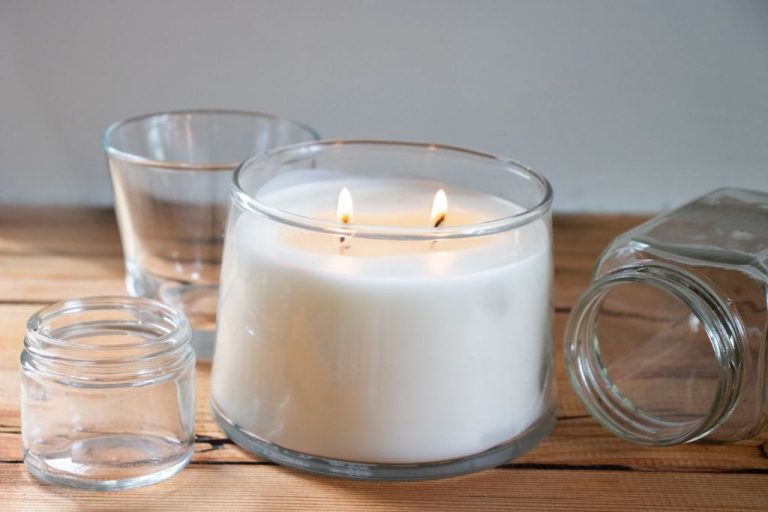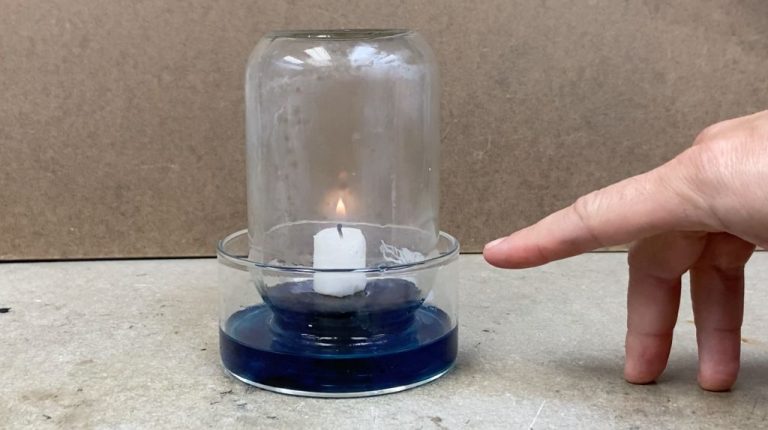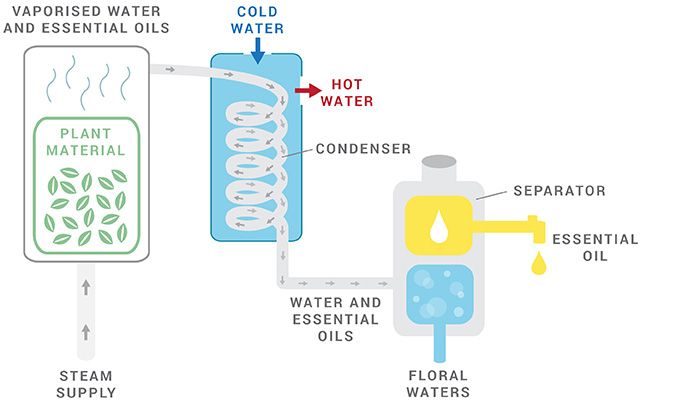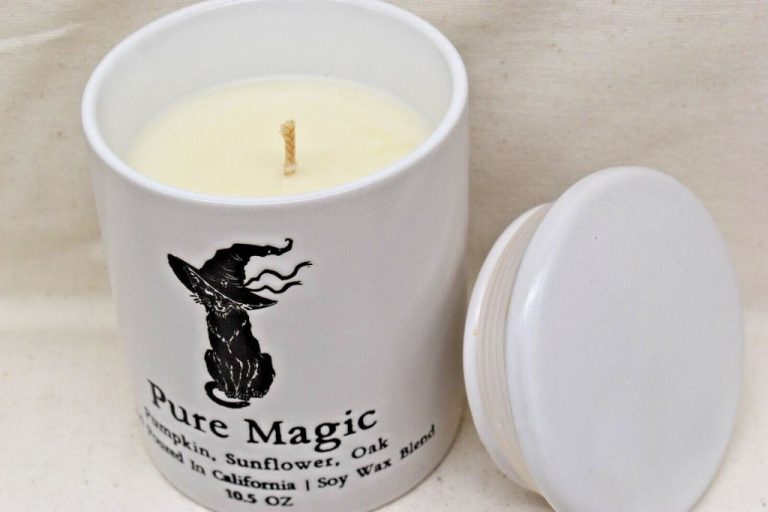How Do You Make Candles Give Off More Light?
Candles have been used for light since ancient times. Before electricity, candles provided a portable source of light. Today, while no longer a necessity, candles remain popular for creating a warm, cozy ambiance and decorative touch. But not all candles give off the same amount of light. The brightness of a candle depends on several factors, from the wax and wick to the size of the candle and room.
The flame of a candle is fueled by the wax melting and traveling up the wick. Therefore, a brighter candle relies on optimizing the capillary action of the melted wax and access to oxygen. With some simple tweaks and tips, it is possible to make your candles shine brighter and illuminate living spaces better.
Wick Size
One of the simplest ways to make a candle give off more light is to use a thicker wick. The wick is the cord inside the candle that brings wax to the flame through capillary action. When lit, the wax moves up the wick and vaporizes at the tip, where it combusts with oxygen. This cycle repeats itself continually while the candle is burning.
A thicker wick provides a larger surface area for combustion. This allows more wax vapor to burn at once, resulting in a larger flame and brighter light. The width of the wick should match the width of the candle. A thick candle needs a thick wick to allow adequate fuel delivery. Going too thick on the wick, however, can cause the flame to get too large and produce excess smoke.
As a rule of thumb, the wick should be approximately 1/8th the diameter of the candle. So a 1-inch diameter pillar candle would need about a 1/8 inch wick. Testing different wick sizes to find the optimal balance of a bright, steady flame without smoking is recommended when making your own candles.
Wick Material
The material used for the candle wick directly impacts how bright the flame will be. Wicks made from natural materials like cotton or paper tend to allow more wax to be drawn up to the flame, creating a hotter, brighter light. Synthetic wick materials like zinc or lead core wicks do not transport wax as efficiently, resulting in a dimmer flame. Cotton in particular is highly absorbent and provides an excellent conduit for wax to travel from the candle’s reservoir to the flame. As the cotton fibers burn along with the wax, they create a larger wick surface area which supports a brighter, more luminous flame. Choosing candles with cotton or other natural fiber wicks is an easy way to maximize candlelight brightness.
Wax Type
The type of wax used to make a candle can significantly impact its brightness. Natural waxes like beeswax and soy wax tend to burn brighter than synthetic waxes like paraffin.
Beeswax contains natural honeycomb particles that act as fuel, enabling the wax to burn slowly and steadily. The honeycomb also allows more oxygen to reach the flame, making it brighter. Soy wax is derived from soybean oil so it also burns clean and bright.
Paraffin wax, on the other hand, is a petroleum byproduct made from crude oil. It contains fewer natural fuels so paraffin candles tend to burn quicker and produce more soot. The soot lowers the flame brightness by obstructing oxygen flow. Paraffin also melts faster than natural waxes, causing the wick to drown and give off less light.
If using synthetic paraffin candles, look for options with climbing down shifts. This adds ketone which helps the wax melt slower and cleaner. But for optimal brightness, choose natural wax candles made from beeswax, soy, or other vegetable oils. The natural fuels will make the flame glow brighter.
Candle Size
One of the most effective ways to make a candle give off more light is by increasing its size. Larger candles have more surface area from which the melted wax can evaporate and release scent and light. This greater surface area exposes more of the wick to oxygen, allowing it to burn brighter.
For example, a large pillar candle 3 inches in diameter will produce a brighter light than a votive or tea light that is less than 1 inch wide. The larger candle has over 6 times more surface area to emit light.
Larger jar candles, columns, or wreaths also give off more illumination than smaller containers. Their greater size means more wax melting at once for a stronger, steadier glow. Just take care not to have candles burning unattended or too close to flammable objects.
When shopping for candles, look at diameter, height, and overall dimensions to estimate the surface area and light output. In general, a bigger candle equals a bigger light.
Room Size
The size of the room where candles are placed is an important factor. Smaller rooms will appear brighter when illuminated with candles compared to larger rooms. This is because the candlelight is concentrated into a smaller space, allowing it to reflect more and illuminate a higher percentage of surfaces.
In a small room, candlelight bounces off the walls, ceiling, and floor, making the space seem brighter than it would otherwise be. The glow extends to all corners and visually enlarges the room.
In contrast, a large room swallows up candlelight. The illumination reaches a smaller portion of the available surfaces. Shadows dominate and the candles struggle to provide sufficient brightness.
To make candles shine brighter in larger rooms, use more candles or cluster them together. Place candles strategically near surfaces you want illuminated. Add reflective accents to amplify the light. Position candles toward the room’s center so the light emanates outward.
The perceived brightness of candles depends significantly on room size. Scale the number and placement of candles appropriately for maximum light in both small and large spaces.
Candle Placement
Where you place your candle can significantly impact how well lit a room or area becomes. When positioning a candle, it’s important to think about where you want the light to reach. Placing a candle in a corner or up against a wall will concentrate the light in a particular direction rather than dispersing it throughout the room. Positioning a candle in the center of a table or open space will allow the light to radiate outward in all directions.
For focused lighting, place candles on shelves, mantles or window sills pointing towards the main space you want to illuminate. To brighten up an entire room, arrange candles throughout on end tables, cabinets and other raised surfaces so their glow can spread out and overlap. Tall taper candles are great for maximizing and directing candlelight. The flame sits higher so the light can shine farther and aim where needed. Experiment with positioning and heights to achieve the candlelight coverage you desire.
Reflectors
One way to make candles give off more light is to use reflectors. Reflective surfaces like mirrors or polished metal can bounce and redirect the candle’s light, helping illuminate a larger area.
Place a mirror, silver tray, or other shiny metal object behind or around a candle to reflect its light forwards. The reflective surface works like a lamp shade to concentrate and distribute the light. Position the reflector to aim the reflected light where you want it.
A reflective material behind a candle can double its brightness. And multiple reflectors placed strategically around a candle can spread its light across an entire room. Experiment with reflective surfaces of different sizes and positions to get the maximum brightness from a candle.
Drafts
One way to make candles give off more light is by blocking or reducing drafts around them. Drafts and air currents can blow at the candle flame, causing it to flicker and give off less consistent light. By placing candles away from AC vents, open windows, and ceiling fans, you can prevent drafts from impacting the flame. You can also block drafts by using glass votive holders or hurricane lamps around candles, which will protect the flame inside. Candles placed in more enclosed spaces with fewer drafts, like corners, alcoves, or covered areas, will be able to burn stronger and produce more light. Reducing air flow around candles allows the flame to burn taller, brighter, and more steadily.
Conclusion
In summary, there are several techniques you can use to make candles give off more light. The most impactful methods are using a larger wick, switching to a wax with a higher melting point, and placing candles in strategic locations to maximize light reflection. But factors like wick material, candle size, drafts, and room size also play a role.
To optimize candlelight, go with a thicker wick made of natural fibers, use high-quality beeswax or soy wax, choose appropriately sized candles for the space, position them near light-reflecting surfaces, and eliminate drafts. Testing different wick types to find the best fit for your candle dimensions and wax is also recommended. With the right combination of adjustments, you can safely increase candle luminescence and enjoy brighter, warmer lighting.






